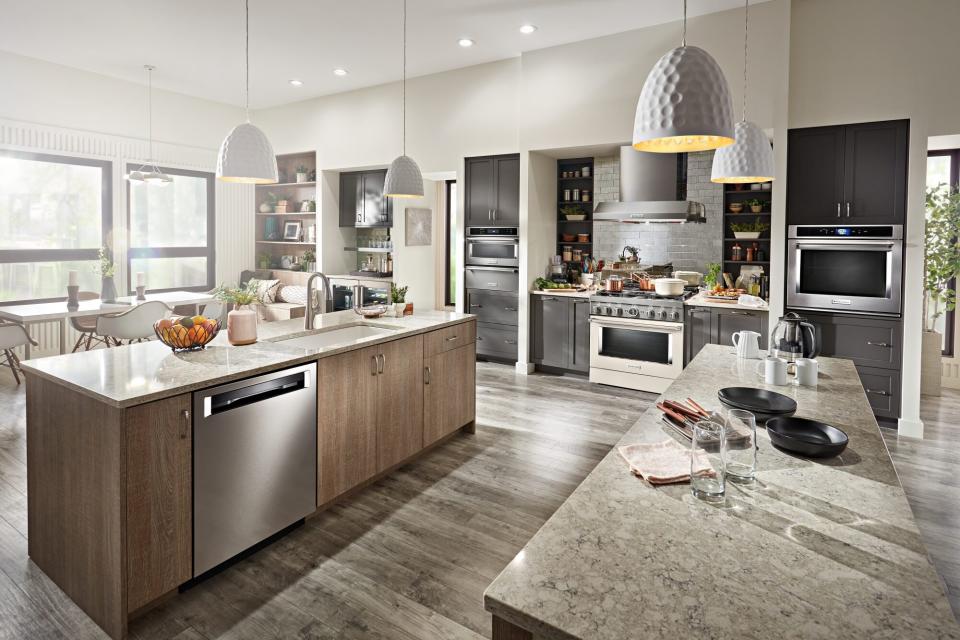Everything You Need to Know Before You Update Your Kitchen with Stainless Steel Appliances
The kitchen has long since been considered the heart of the home, says Ron Shimek, the president of Mr. Appliance, a Neighborly company. This still rings true for many homeowners: It's where meals are both prepared and shared, and it's the spot where stories are told. "With that said, it's important for this space to be designed according to the homeowners' comfort and style," he explains. "This is why stainless steel products have been a favorite in kitchens for many years—they're sleek and always look effortlessly modern." However, before you upgrade, there are a few things you should know about these appliances, including their longevity and cleaning requirements.
Related: How to Clean Stainless Steel Appliances

Courtesy of KitchenAid
Stainless steel appliances are durable and easy to clean.
As their name suggests, stainless steel appliances are resistant to many forms of wear and tear, including rust, water, and heat damage, notes Shimek. "Not only are they difficult to stain, but they're also hard to scratch!" Cleaning stainless steel is also easy. "Simply use a warm, damp cloth with a bit of mild dish soap to wipe away any food spills or brighten up dull spots. Be sure to follow the direction of the grain while doing so," he explains. "When in doubt, always refer to your owner's manual for the manufacturer's tips on caring for that particular appliance."
They work well for families.
Stainless steel is a non-porous material, which can limit germs and bacteria from settling into the material (according to Shimek, woods and plastics aren't so hardy). "This makes these appliances a great option for homes where children or seniors also live," he explains.
They speak to a variety of décor schemes.
These appliances hold up to a myriad of issues, including heat, fire, and rust, explains Lisa Seeger, a design trend expert at N-Hance, a company that refinishes many kitchen components—and they are just as diverse from an aesthetics perspective. "They're design neutral, which is nice," she says. "You can change wall and cabinetry colors without the appliance finish interfering."
Stainless steel shows dirt, smudges, and fingerprints easily.
Though cleaning stainless steel appliances is straightforward, these machines tend to be high maintenance. "Every smudge is visible, which means homeowners may find themselves wiping their appliances down several times a day," Shimek says.
They can be expensive.
Cost is one of the biggest deterrents homeowners face when purchasing these appliance types, explains Shimek; they are typically more expensive than their counterparts made from other materials. They are, however, a worthwhile purchase, say our experts: "Here's one thing to keep in mind: The initial investment can be maximized through proper and timely maintenance and repair when needed to extend life of the appliance," Shimek says. "If you do purchase these machines, don't put off repairs and supply normal care when needed."
Not every model is magnetic.
While several models work well for families with children, they won't all serve as a place to show off your little one's latest piece of artwork. "This may not be a deal breaker for everyone, but some stainless steel appliances are not magnetic," Shimek explains. "For somebody who collects fun magnets for refrigerators, or likes to have pictures up on these, they may have to look just a little harder to find the right magnetic appliance for them."

